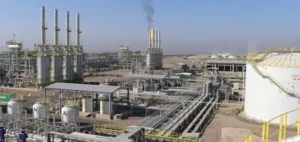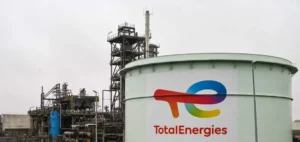Weekly commercial crude oil reserves in the United States fell by 17 million barrels, a record well above analysts’ forecasts, according to data released Wednesday by the U.S. Energy Information Administration (EIA).
Commercial oil reserves down: Inventories fall by 17 million barrels in one week, the market reacts.
In the week ending July 28, inventories stood at 439.8 million barrels, 17 million barrels less than the previous week, while analysts were forecasting a reduction of only 1.05 million barrels, according to a consensus drawn up by Bloomberg. On the market, brokers had already anticipated a sharp reduction in US inventories following the release the previous day of figures from the American Petroleum Institute (API), which suggested a drop of 15.4 million barrels. Following the release of the EIA report on Wednesday, crude oil prices, which in theory should have risen given the tighter supply situation, fell back instead.
“The market was actually expecting this increase in inventory drawdown after the API figures, so there was some profit-taking,” commented Kpler’s Matt Smith, pointing out that the price of a barrel had risen sharply over the past month and was meeting resistance.
Significant fall in oil prices following a record drop in US inventories
At around 15:45 GMT, Brent North Sea crude oil for October delivery was down 2.14% at 83.09 dollars. Its US equivalent, a barrel of West Texas Intermediate (WTI) for September delivery, fell by 2.53% to $79.31.
For Matt Smith, “robust exports and sustained refining activity combined to produce the largest-ever drawdown in weekly US crude inventories”.
The analyst added, however, that “we shouldn’t expect such large-scale drawdowns in the future”. Andy Lipow, of Lipow Oil Associates, was more surprised by this record figure.
“Part of the explanation for this huge decrease in inventories, which comes mainly from the Gulf of Mexico region, lies in an increase in refinery activity in this region and in a rise in exports”. “But that’s not enough to explain this huge figure,” he added, wondering whether we shouldn’t expect “a major correction next week”.
Strategic reserves stable at 346.8 million barrels, while exports rise: the US oil market holds steady
Strategic oil reserves, on the other hand, which the government stopped drawing on several weeks ago, remained stable at 346.8 million barrels. Gasoline inventories fell by 1.5 million barrels over the week, as analysts had expected. Crude oil production remained stable at 12.2 million barrels per day.
The refinery utilization rate was 92.7%. Crude oil imports rose slightly (+301,000 b/d), while exports increased much more (+692,000 b/d). Demand fell to 20.02 million barrels per day from 21.2 million the week before.
On average over four weeks, an indicator closely followed by operators, deliveries of gasoline, kerosene and distillates were slightly up by 1.4% on last year. At the same time, they stood at 20.192 million barrels per day.






















